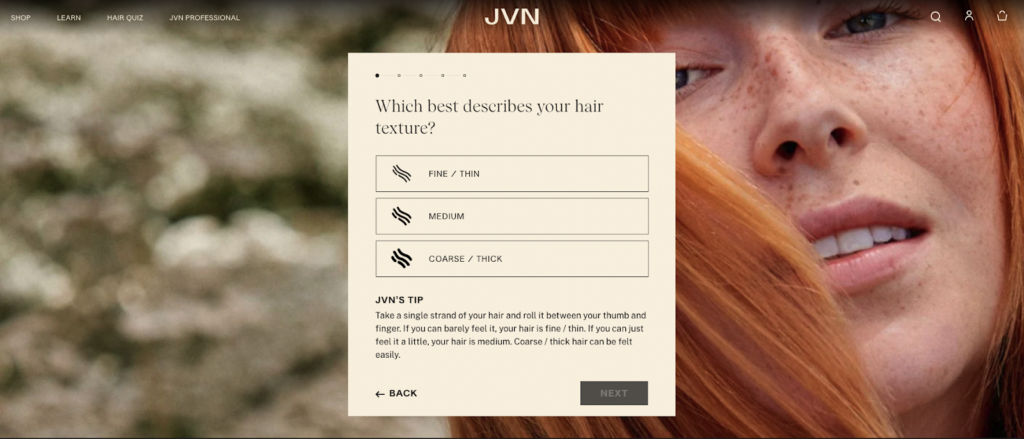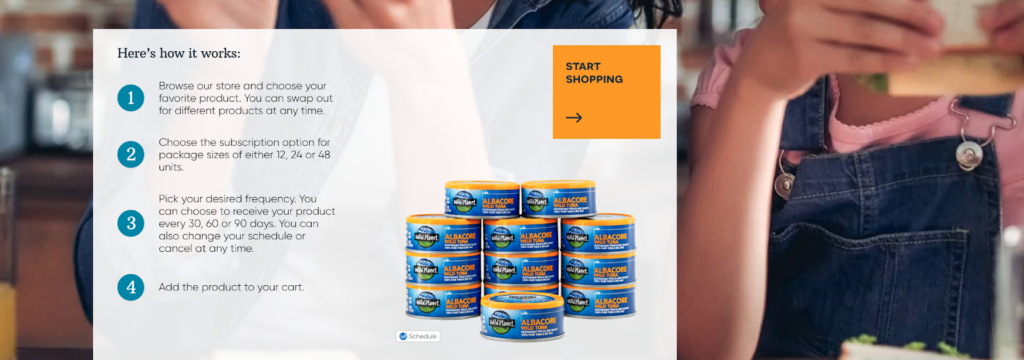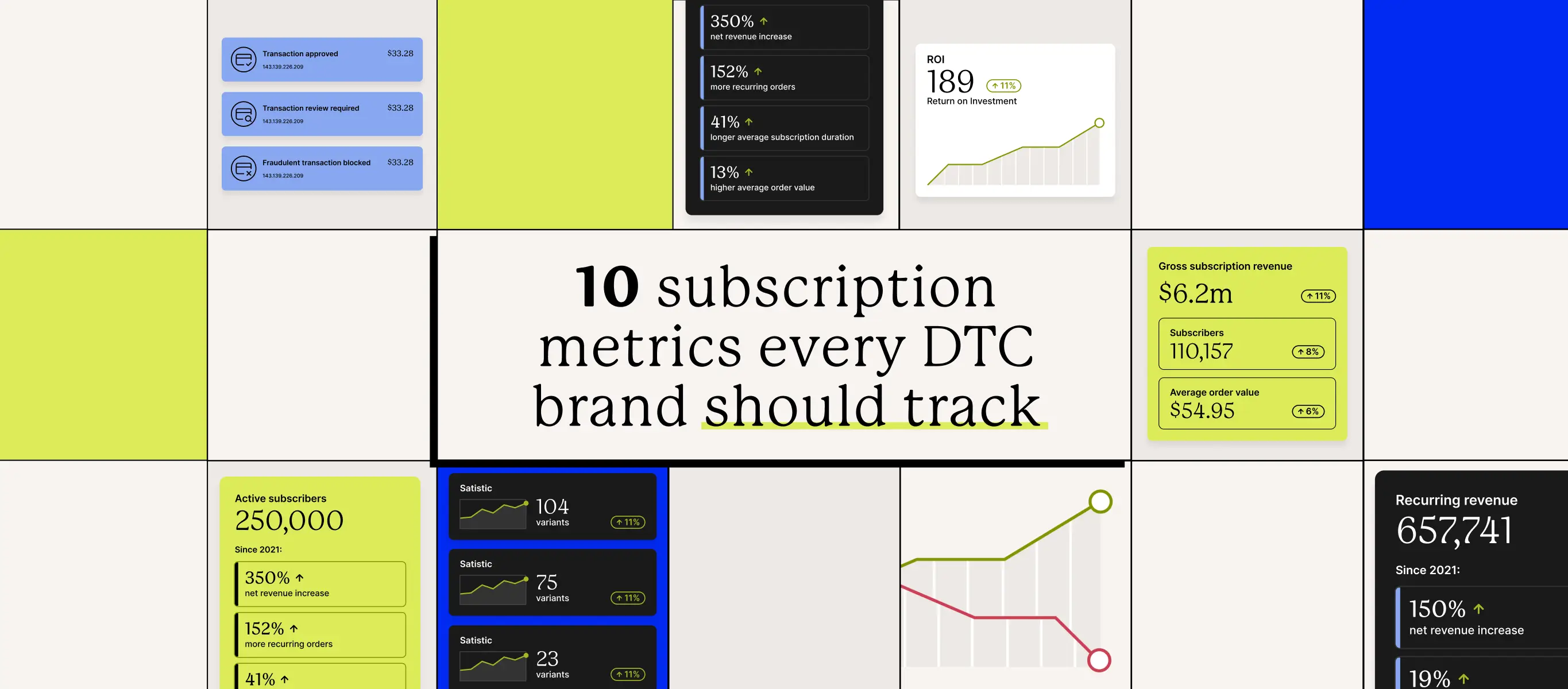It is estimated that there are over 20 million ecommerce sites worldwide, with more being added every day. As the rise of digital commerce continues to permeate shoppers’ habits, online retailers have to work harder than ever before to capture consumer attention and hold it long enough to establish a solid relationship.
Standing out from the competition in a highly saturated market has driven merchants to deliver personalized experiences to capture loyalty among their customer base. A study by Segment found that 44% of buyers would likely become repeat customers if the shopping experience were personalized. It’s a difficult job, but when done right, can give a better understanding of customer behavior and their appetite for personalized experiences.
Key takeaways
- Customers want their experiences with ecommerce merchants to be personalized.
- Ecommerce personalization can increase open rates and conversion rates.
- Personalization efforts are multifaceted and can take many forms to provide the right experience for your specific customers.
What is ecommerce personalization?
Ecommerce personalization can be defined as the process of using both anonymous and known customer data—demographics, past purchases, browsing behavior, or search intent—to create unique experiences for online shoppers visiting and purchasing from an ecommerce website.
Ecommerce personalization efforts can look as straightforward as questionnaires on a site to provide product recommendations. They can also be as complex as using browsing history and domain referrals to change a website to fit a specific customer profile.
How to implement ecommerce personalization
There are many different ecommerce personalization tactics an online store can use to enhance the customer experience and recommend relevant offers to increase sales. Email is a channel that is used often to grab the attention of a customer by using their first name. In fact, emails with the recipient’s [correct] first name have 2.6 times higher open rates than generic emails. But that’s not the only opportunity merchants have to create a strong personalization experience for their customers.
- Utilize quizzes & questionnaires
Quizzes and questionnaires are often used by brands who need to present product recommendations based on the specific needs of their customers. The shopping experience can look like this: A customer needs to find a skincare regimen that addresses the areas they’re most concerned with—aging, sun damage, and non-uniform color. They come across user-generated content (UGC) from an influencer they follow, and find themselves on a skincare brand’s website.
After browsing, they realize there are far too many options for them to make an informed decision. Thankfully, the brand has a “Find Your Regimen” questionnaire front and center on their website. The customer answers the questions, hits submit, and is given personalized recommendations for products that will help them achieve their skincare goals.
- Implement dynamic content
Another tactic used in personalization is to serve up relevant content to customers based on their previous sessions on a website. For example, new customers to a site may see the overall generic messaging and images that speak at a high level about the brand and product offerings. But as those website visitors return, merchants can use machine learning to understand their user behavior—preferences, previous purchases, and even intent—and show them images and content that is relevant to the online shopper. This personalized experience can create a sense of trust, feeling that the merchant fully understands the unique needs of their customers.
Merchants can also use third-party data to supplement these personalization efforts and lean into regional or location specific information, demographics, and look-alike profiling to engage customer segments.
- Create complementary offers
The personalized shopping experience can also be achieved by utilizing your own knowledge about your products and serving up complementary products that would further drive customer satisfaction. For example, if a hair care merchant were offering shampoo and conditioner sets targeting frizz, they could offer up a serum or other styling products that are directly in line with what their customer is trying to achieve. It’s a cross-sell tactic that can ultimately lead to more sales, while also enhancing the customer experience.
Examples of ecommerce personalization
A good ecommerce personalization example is JVN Hair. In the navigation of their site, they have an option to take a “Hair Quiz.” Each question also comes with a tip so customers can have a better understanding of how best to answer the quiz for their specific hair needs. The results are calculated to provide personalized product recommendations, all complementary items to each other, with a 25% off discount.

Another way to deliver personalized experiences is in using bundling functionality, like the brand, Crafty Ramen. By selecting preferred options, customers can build a custom kit personalized to their taste, mitigating the possibility of receiving an item they don’t care for. Enabling bundling on product pages further drives customer engagement month after month. Customers can select new items for their bundle, or go all-in on their favorites.

There’s a sentiment among some customers that subscriptions are too much of a commitment. Wild Planet Seafood puts language and functionality upfront for their subscription offering that showcases how their customers can personalize their subscription experience.
Providing product swap options, different package sizes, and desired shipment frequencies, customers can create a personalized delivery that can alter and shift as their circumstances change. This type of personalization is less about the specific product offering, and more about working around unique schedules and shipment preferences.

3 benefits of implementing ecommerce personalization
- Customer loyalty
Most businesses are in the game of customer retention. Especially for ecommerce, returning visitors aid in meeting business goals by creating a recurring revenue stream. Personalizing the customer experience further drives loyalty, allowing your shoppers to understand that you “get” them. By showing them you care to understand their unique needs, they are more likely to return month after month to get what they need.
- Competitive differentiation
What about your product or company makes you different from your competition? How would your ideal customer identify with your brand in a way that speaks to them? As the shopper pool gets younger, they are gravitating more toward brands that have their own best interests covered. Personalization based on mission is a way to stand out from others in your market segment. Customers that feel as though they are truly understood by a brand are more likely to invest their money in products that they feel meet their specific tangible and immaterial needs.
- Increases conversion rates & boosts sales
Creating an ecommerce site layout where personalization is at the forefront can convert first time visitors into loyal customers. Avoiding analysis paralysis by utilizing personalization tactics to offer up the right products at the right time can eliminate the overwhelm customers are often faced with. Think of it as doing the heavy lifting for your shoppers. You have done the hard work of researching what would be right for them. Now all they have to do is trust that you truly do have the products that will solve their unique challenges or problems.
Marketers agree that personalized experiences are one of the most important tactics to focus on to boost sales. According to respondents from Campaign Monitor, personalization has increased sales by 20% on average.
Challenges of ecommerce personalization
When done right, the benefits of ecommerce personalization outweigh the risks—but there are a few reasons why personalization can be challenging. Get it wrong, and customers are likely to leave you for a competitor who is nailing their personalization strategy.
Dirty data
One challenge of ecommerce personalization is managing and analyzing the amount of data needed to nail the personal touch. Maintaining “clean” data is imperative to generating personalized content. Without it, customers can very quickly lose trust in the brand’s authenticity.
Too many variations
Try not to boil the ocean. Personalization can also get unruly very quickly. Think of all of your customer segments. What would it look like if you created variations to copy on your most highly trafficked web page that speak directly to them?
Now slice the segment even further. What if you split that specific segment into further micro-segments based on a demographic indicator? Your one page of copy has now ballooned into many iterations all trying to say the same thing, but in a specific way to a specific group of people. The key here is to figure out your top customer segment—those most likely to convert and to stay loyal—and cultivate personalization for them first. Once you establish the baseline, you can build slowly and accurately.
Human or machine?
Budgeting and bandwidth often come up as challenges in getting personalization right, so merchants often turn to artificial intelligence (AI) to do the heavy lifting for them. Where AI can be a powerful tool to create variations on a message, the same challenges apply as the data issue. Products of AI will still need a critical eye for review and accuracy before going out into the world to ensure that the customer doesn’t see through the tradeoff of human touch for the sake of efficiency.
What it means to personalize your customer experience
Personalization has become the benchmark of perfection for ecommerce brands. Without some level of personalization opportunities, customers can point out the hole that’s missing in their experience.
Ensure you are amplifying customer experiences throughout every phase of the customer journey. What are their touchpoints and how can you make each of those feel unique to the user? Analyze high traffic places on your site and ask yourself if those areas can be altered to provide a personal touch.
Remember, the better the personalization, the stronger the customer loyalty.



